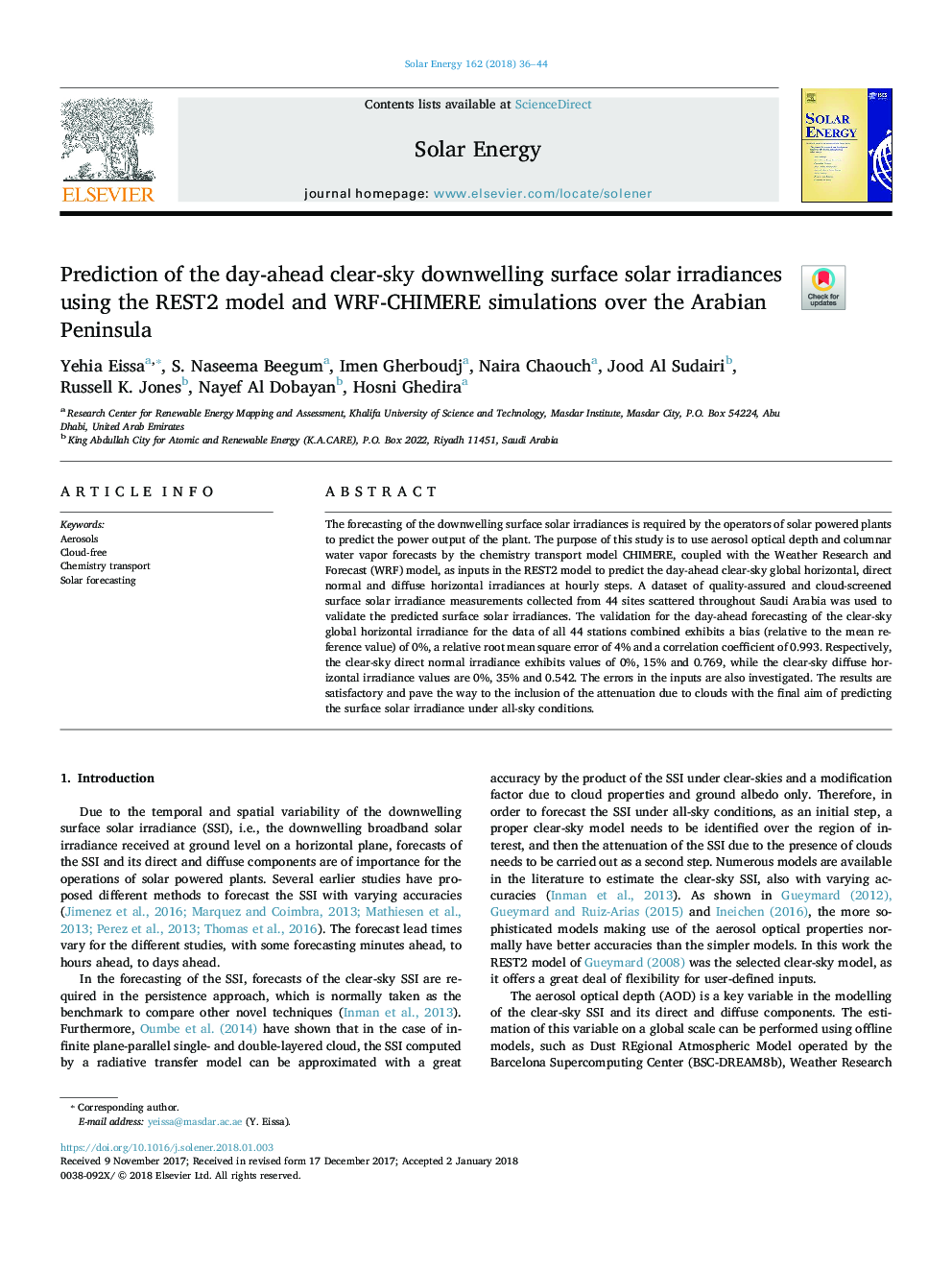| Article ID | Journal | Published Year | Pages | File Type |
|---|---|---|---|---|
| 7935635 | Solar Energy | 2018 | 9 Pages |
Abstract
The forecasting of the downwelling surface solar irradiances is required by the operators of solar powered plants to predict the power output of the plant. The purpose of this study is to use aerosol optical depth and columnar water vapor forecasts by the chemistry transport model CHIMERE, coupled with the Weather Research and Forecast (WRF) model, as inputs in the REST2 model to predict the day-ahead clear-sky global horizontal, direct normal and diffuse horizontal irradiances at hourly steps. A dataset of quality-assured and cloud-screened surface solar irradiance measurements collected from 44 sites scattered throughout Saudi Arabia was used to validate the predicted surface solar irradiances. The validation for the day-ahead forecasting of the clear-sky global horizontal irradiance for the data of all 44 stations combined exhibits a bias (relative to the mean reference value) of 0%, a relative root mean square error of 4% and a correlation coefficient of 0.993. Respectively, the clear-sky direct normal irradiance exhibits values of 0%, 15% and 0.769, while the clear-sky diffuse horizontal irradiance values are 0%, 35% and 0.542. The errors in the inputs are also investigated. The results are satisfactory and pave the way to the inclusion of the attenuation due to clouds with the final aim of predicting the surface solar irradiance under all-sky conditions.
Keywords
Related Topics
Physical Sciences and Engineering
Energy
Renewable Energy, Sustainability and the Environment
Authors
Yehia Eissa, S. Naseema Beegum, Imen Gherboudj, Naira Chaouch, Jood Al Sudairi, Russell K. Jones, Nayef Al Dobayan, Hosni Ghedira,
